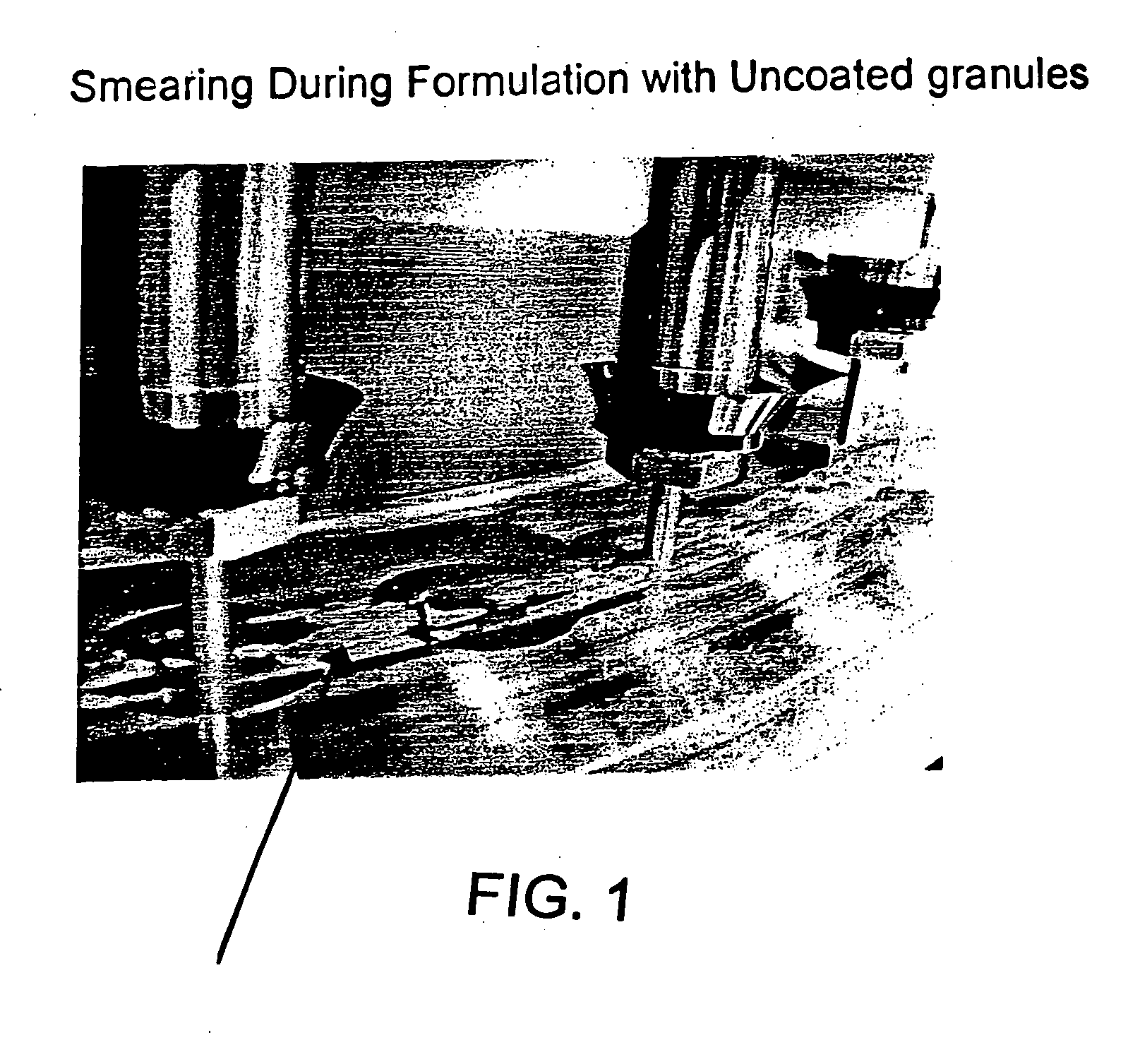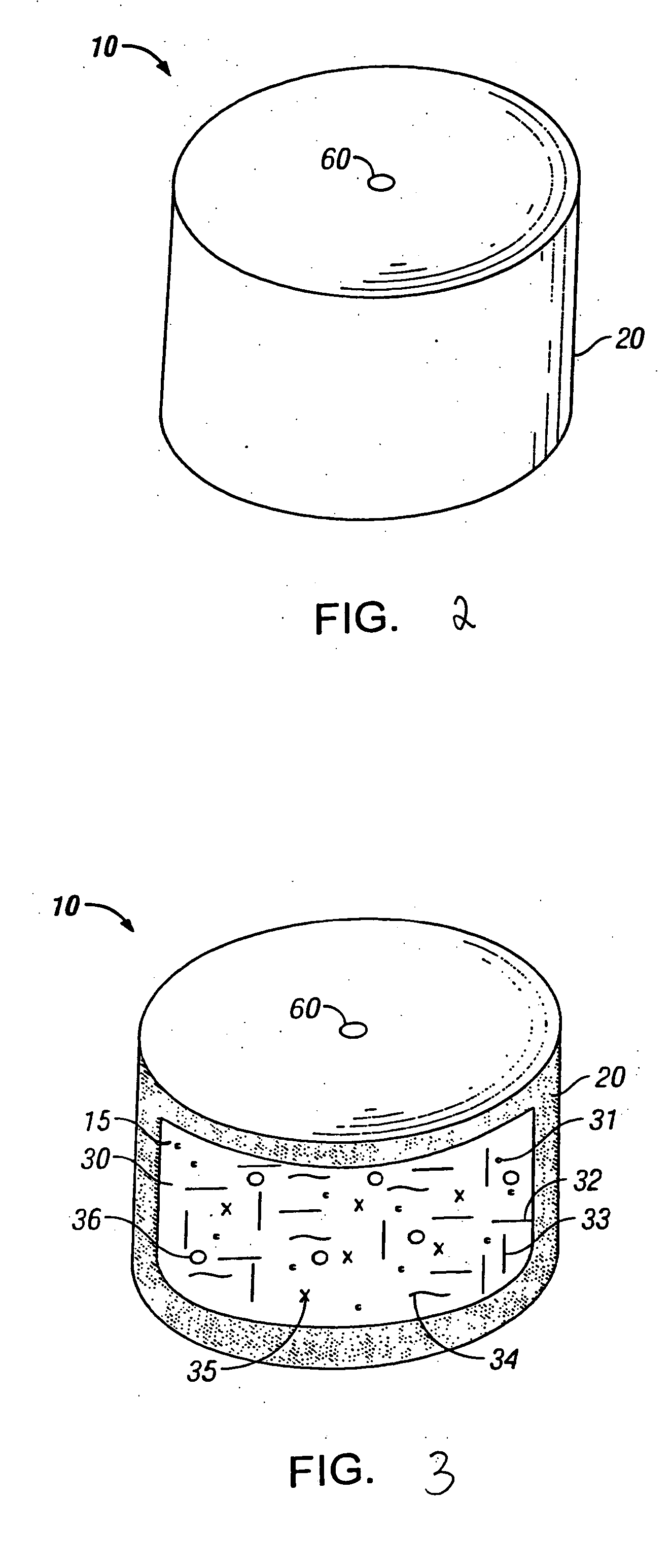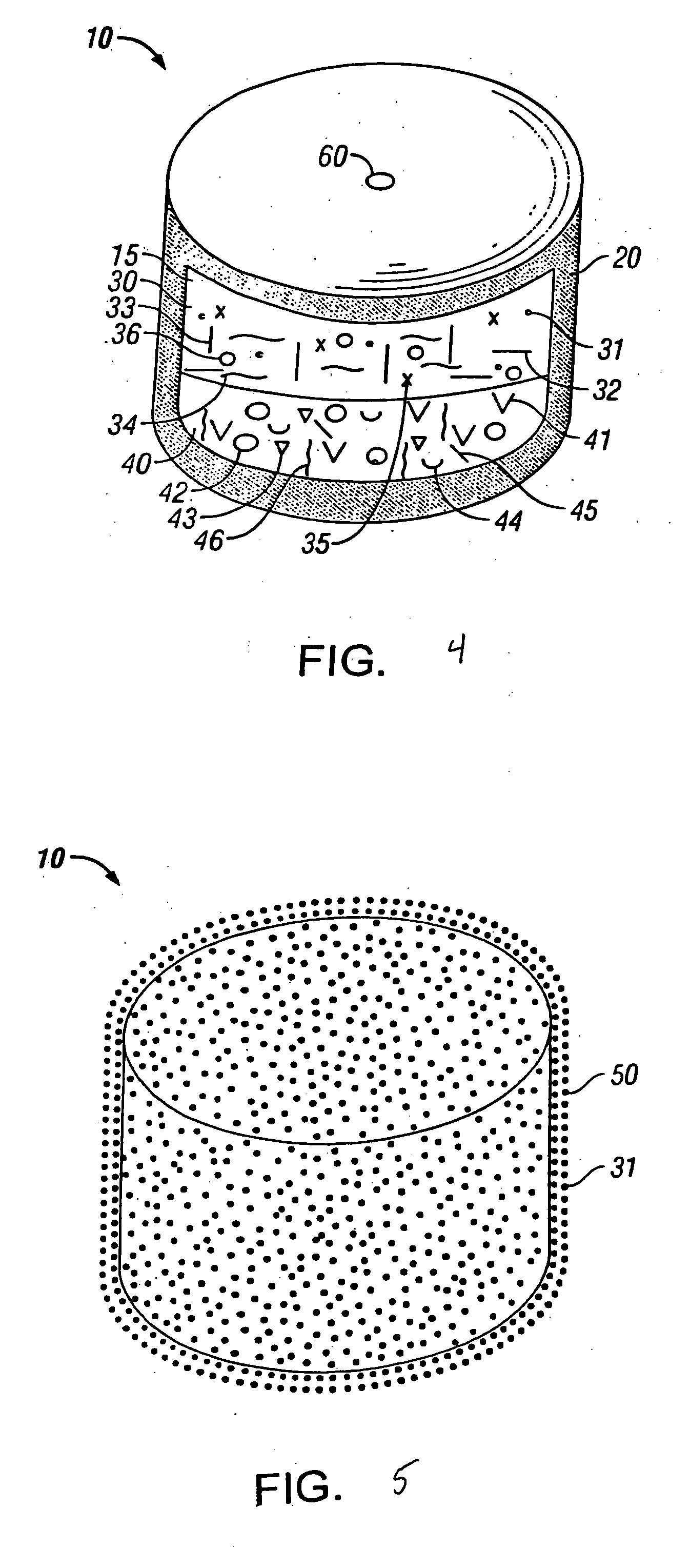Drug granule coatings that impart smear resistance during mechanical compression
a technology of mechanical compression and granules, applied in the direction of osmotic delivery, microcapsules, biocide, etc., can solve the problems of drug solubility in the presence of osmagent that cannot be released at a controlled rate, drug solubility is still too low, and drug solubility is often less than 100 mg/ml, so as to increase the time to maximum release rate, increase the period of therapeutic drug delivery, and reduce the dissolution rate therapeutic drug
- Summary
- Abstract
- Description
- Claims
- Application Information
AI Technical Summary
Benefits of technology
Problems solved by technology
Method used
Image
Examples
example 1
[0374] For purposes of comparison a conventional topiramate drug formulation was prepared as follows.
[0375] First, a binder solution was prepared. 3 kg of polyvinylpyrrolidone (K29-32; average molecular weight of 40,000) was dissolved in 17 kg of water. Then, the 17.28 kg of Topiramate, 5.75 kg of Polyethylene oxide N-80 (approximately 2 million molecular weight) and 32.16 kg of Poloxamer 407 and 1.5 kg of polyvinylpyrrolidone identified as K29-32 were added to a fluid bed granulator bowl. The dry materials were fluidized and mixed while 10 kg of binder solution was sprayed from 3 nozzles onto the powder. The granulation was dried in the fluid-bed chamber to an acceptable moisture level. The coated granules were sized using a Fluid Air mill with a 7-mesh screen. The granulation was transferred to a tote tumbler, mixed with 12 g of butylated hydroxytoluene and lubricated with 1.2 kg of stearic acid and 600 g of magnesium stearate.
[0376]FIG. 1 shows the smearing observed with the co...
example 2
[0377] 1 kilogram of coated granules was fabricated as follows.
[0378] 304 grams of topiramate free acid, 566 grams of LUTROL F127, and 30 grams of polyvinyl pyrrolidone 12PF (PVP) were passed through a #40 mesh sieve and dry mixed. Prior to this sizing operation, the drug particle size was nominally about 100 microns and the LUTROL F127 had been micronized to a finely divided size. 100 grams of POLYOX N80 was passed through a #50 mesh sieve and blended into the mixture. The mixed powders were introduced to a small bowl mixer. The mixer was started and while mixing the powders, 100 ml of anhydrous ethanol was slowly and continuously added to the mixture, forming a uniform, damp mass. The damp mass was removed from the mixer and spread on open trays to air dried overnight in a fume hood. The dried mass was then passed through a #20 mesh sizing sieve.
[0379] The resulting bulk granules were transferred to a mini-Glatt fluid bed granulator (FBG) and fluidized in a current of warm, dryi...
example 3
[0383] Solubilizing granules of nearly equivalent granule core and coating composition to the granules described in Example 2 were made at the 30 kg scale using pilot manufacturing scale equipment. The resulting coated granules were fed to a Korsch multiplayer press to assess smearing. After formulating these granules into tablets for about 30 minutes, the surface of the press turret was clean and almost completely free of smeared material.
[0384] Delivery systems were then hand fabricated with this batch of coated granules and tested for release of drug. The performance of these systems with coated granules at the 30 kg scale was compared to the performance of systems encapsulated at the 1 kg scale by measuring release rates.
[0385]FIG. 8 shows topiramate release patterns of control release topiramate dosage forms having coated granules prepared in the 1 kg and 30 kg batch sizes. The results show that the release patterns of both production systems were equivalent. That is, no diff...
PUM
| Property | Measurement | Unit |
|---|---|---|
| Fraction | aaaaa | aaaaa |
| Fraction | aaaaa | aaaaa |
| Fraction | aaaaa | aaaaa |
Abstract
Description
Claims
Application Information
 Login to View More
Login to View More - R&D
- Intellectual Property
- Life Sciences
- Materials
- Tech Scout
- Unparalleled Data Quality
- Higher Quality Content
- 60% Fewer Hallucinations
Browse by: Latest US Patents, China's latest patents, Technical Efficacy Thesaurus, Application Domain, Technology Topic, Popular Technical Reports.
© 2025 PatSnap. All rights reserved.Legal|Privacy policy|Modern Slavery Act Transparency Statement|Sitemap|About US| Contact US: help@patsnap.com



